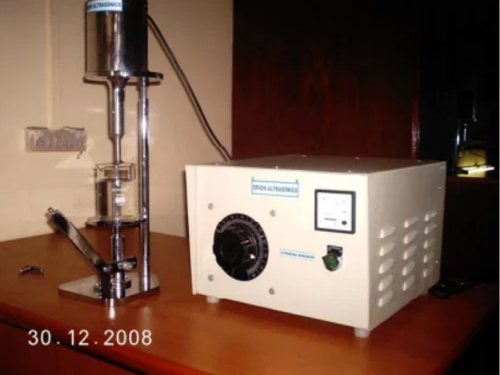
Ultrasonic Processor Sonicator
Introduction: Ultrasonic processing has developed into an effective method for a range of scientific and industrial uses. The emergence of ultrasonic processor sonicators has brought about a revolutionary change in sample processing.
Working Principles: Ultrasonic processor sonicators utilize high-frequency sound waves to aid in sample processing. The devices consist of a generator that produces electrical energy, which is then converted into ultrasonic waves by a transducer. These ultrasonic waves are transmitted into the sample through a probe or horn, inducing cavitation.
Cavitation is the formation, growth, and implosion of small bubbles in a liquid. When the ultrasonic waves pass through the sample, they create alternating high- and low-pressure waves. During the low-pressure phase, small bubbles form and grow. As the pressure increases, the bubbles collapse violently, generating intense localized heating and shockwaves. This phenomenon leads to various effects such as emulsification, dispersing, homogenizing, degassing, and cell disruption, depending on the application requirements.
Key Features
- Frequency Control: Users can choose the ideal frequency for their particular application, thanks to the precise frequency control offered by ultrasonic processor sonicators. Frequencies typically range from 20 kHz to 100 kHz, with higher frequencies providing finer control and lower amplitudes suitable for delicate samples.
- Amplitude Control: These devices enable users to adjust the amplitude of the ultrasonic waves, determining the intensity of the cavitation effect. Variable amplitude settings allow for precise control, ensuring efficient processing while avoiding excessive sample damage.
- Pulse Mode: Numerous ultrasonic processor sonicators include a pulse mode option that enables intermittent ultrasonic treatment. This mode is beneficial for temperature-sensitive samples as it reduces heat generation during processing.
- Temperature Regulation: Sophisticated sonicators feature temperature regulation systems to avert overheating of samples. They can incorporate cooling systems or monitoring sensors to maintain the desired temperature range during processing.
- Programmability and Data Logging: Some models feature programmable settings and data logging capabilities, allowing users to create and store customized processing protocols. This feature enhances repeatability, consistency, and traceability in sample processing.
Applications: Sonicators, which are ultrasonic processors, have applications in a variety of fields, such as:
- Sample Preparation: They are widely used for sample preparation in analytical chemistry, molecular biology, and materials science. Sonication facilitates the extraction of compounds from solid samples, cell lysis, emulsification of immiscible liquids, and dispersion of nanoparticles.
- Homogenization: Samples are homogenized using sonicators to guarantee uniformity and eradicate particle agglomeration. This is crucial in industries such as food, cosmetics, and pharmaceuticals.
- Disruption of Biological Samples: Ultrasonic processing is an effective method for disrupting cell walls and membranes, aiding in DNA and protein extraction, microbial inactivation, and cell disruption for downstream applications.
- Cleaning and Degassing: Sonicators serve the purpose of cleaning fragile items, eliminating contaminants, and degassing liquids by removing dissolved gases. This application is prominent in electronics, optics, and jewelry industries.
- Nanotechnology: Ultrasonic processors are essential for the synthesis and modification of nanomaterials. They aid in the production of nanoparticles, dispersion of nanotubes, and functionalization of nanomaterial surfaces.
Benefits
- Speed and Efficiency: Ultrasonic processor sonicators offer rapid processing times, reducing the overall workflow duration. Their ability to simultaneously perform multiple sample treatments enhances efficiency, allowing for increased sample
